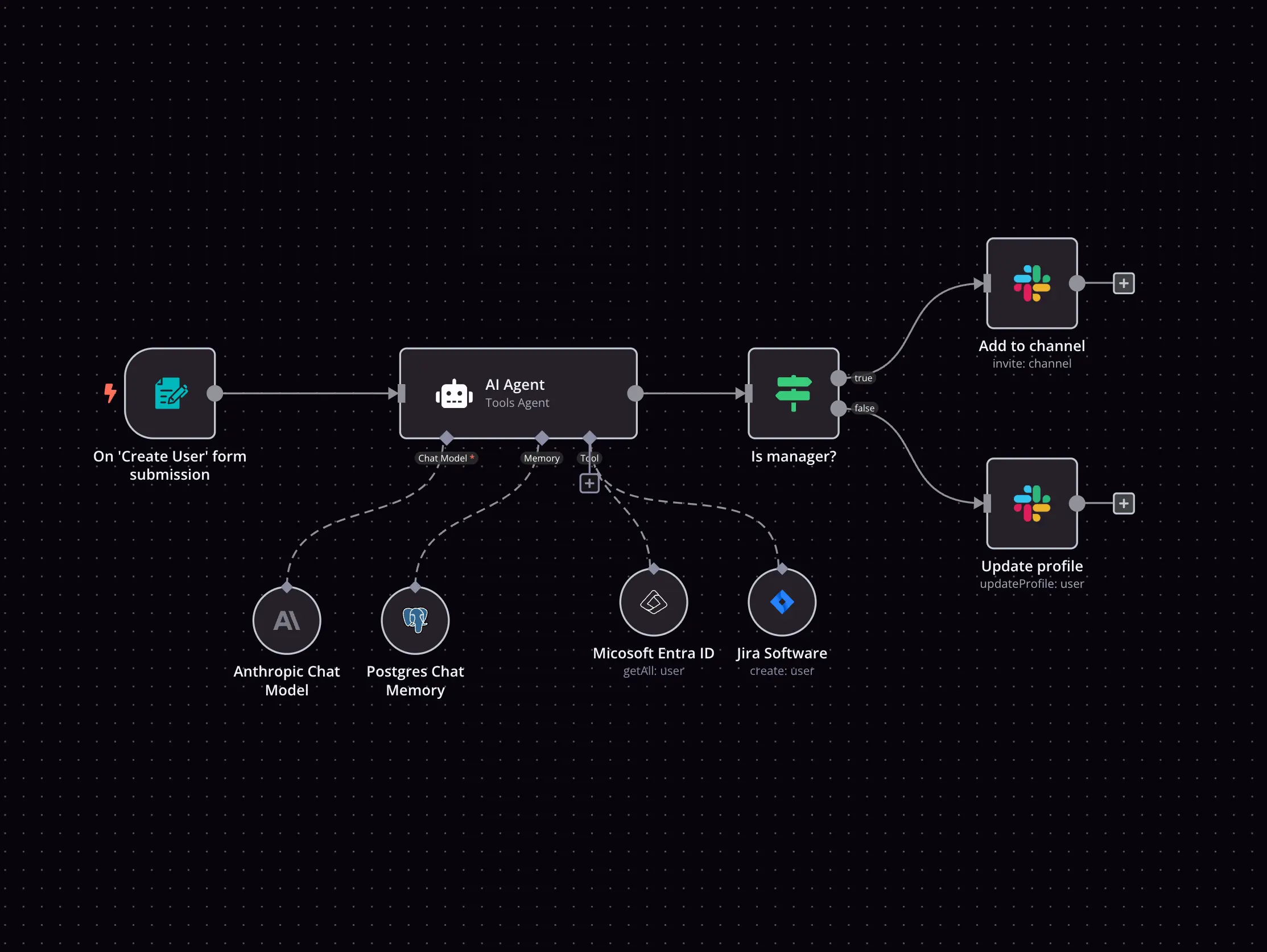Apify and GitHub integration
Save yourself the work of writing custom integrations for Apify and GitHub and use n8n instead. Build adaptable and scalable workflows that work with your technology stack. All within a building experience you will love.
How to connect Apify and GitHub
Create a new workflow and add the first step
In n8n, click the "Add workflow" button in the Workflows tab to create a new workflow. Add the starting point – a trigger on when your workflow should run: an app event, a schedule, a webhook call, another workflow, an AI chat, or a manual trigger. Sometimes, the HTTP Request node might already serve as your starting point.
Build your own Apify and GitHub integration
Create custom Apify and GitHub workflows by choosing triggers and actions. Nodes come with global operations and settings, as well as app-specific parameters that can be configured. You can also use the HTTP Request node to query data from any app or service with a REST API.
What can you do with Apify?
Run an Actor
Runs an Actor. You can override the Actor’s input configuration by providing a custom body, which will override the prefilled input values.
Run an Actor and Get Dataset
Runs an Actor, waits for it to finish, and finally returns the dataset items
Scrape Single URL
Scrape a single URL using the Apify Website Content Crawler Actor and get its content as text, markdown, and HTML
Get Last Run
Retrieves the most recent run of an Actor. This endpoint is useful for quickly accessing the latest run details, including its status and storages, without needing to specify a run ID.
Run Task
Runs an Actor Task and return all associated details. You can optionally override the Actor’s input configuration by providing a custom body.
Run Task and Get Dataset
Runs an Actor task, waits for it to finish, and finally returns the dataset items. You can optionally override the Actor’s input configuration by providing a custom body.
Get User Runs List
Gets a list of Actor runs for the user. This endpoint is useful for retrieving a history of runs, their statuses, and other data.
Get run
Gets the details of a specific Actor run by its ID. This endpoint is useful for retrieving information about a run, such as its status, storages, and other metadata.
Get runs
Gets a list of Actor runs. This endpoint is useful for retrieving a history of runs, their statuses, and other data.
Get Items
Retrieves items from a dataset
Get Key-Value Store Record
Gets a value stored in the key-value store under a specific key
GitHub supported actions
Create
Create a new file in repository
Delete
Delete a file in repository
Edit
Edit a file in repository
Get
Get the data of a single file
List
List contents of a folder
Create
Create a new issue
Create Comment
Create a new comment on an issue
Edit
Edit an issue
Get
Get the data of a single issue
Lock
Lock an issue
Get Repositories
Returns all repositories of an organization
Create
Creates a new release
Delete
Delete a release
Get
Get a release
Get Many
Get many repository releases
Update
Update a release
Get
Get the data of a single repository
Get Issues
Returns issues of a repository
Get License
Returns the contents of the repository's license file, if one is detected
Get Profile
Get the community profile of a repository with metrics, health score, description, license, etc
Get Pull Requests
Returns pull requests of a repository
List Popular Paths
Get the top 10 popular content paths over the last 14 days
List Referrers
Get the top 10 referrering domains over the last 14 days
Create
Creates a new review
Get
Get a review for a pull request
Get Many
Get many reviews for a pull request
Update
Update a review
Get Repositories
Returns the repositories of a user
Get Issues
Returns the issues assigned to the user
Invite
Invites a user to an organization
Disable
Disable a workflow
Dispatch
Dispatch a workflow event
Dispatch and Wait for Completion
Dispatch a workflow event and wait for a webhook to be called before proceeding
Enable
Enable a workflow
Get
Get a workflow
Get Usage
Get the usage of a workflow
List
List workflows
Apify and GitHub integration details
Apify and GitHub integration tutorials

How to push code to GitHub: 3 techniques
Learn how to seamlessly push code into GitHub with these 3 techniques: GitHub command line; GitHub n8n node for remote repositories, n8n Git node for local repos. And grab free n8n workflows for a quick start with GitHub automations!

How to automatically manage contributions to open-source projects
Maintainers, this one’s for you: simplify your work by building a no-code workflow that assigns GitHub issues to contributors.

How to set up a no-code CI/CD pipeline with GitHub and TravisCI
Learn how Continuous Integration, Continuous Delivery, and Continuous Development work, and how you can set up a CI/CD pipeline.

How to automatically give kudos to GitHub contributors
Create a workflow that sends Slack notifications about GitHub contributors to celebrate their valuable contributions.
FAQ
Can Apify connect with GitHub?
Can I use Apify’s API with n8n?
Can I use GitHub’s API with n8n?
Is n8n secure for integrating Apify and GitHub?
How to get started with Apify and GitHub integration in n8n.io?
Looking to integrate Apify and GitHub in your company?
The world's most popular workflow automation platform for technical teams including
Why use n8n to integrate Apify with GitHub
Build complex workflows, really fast


